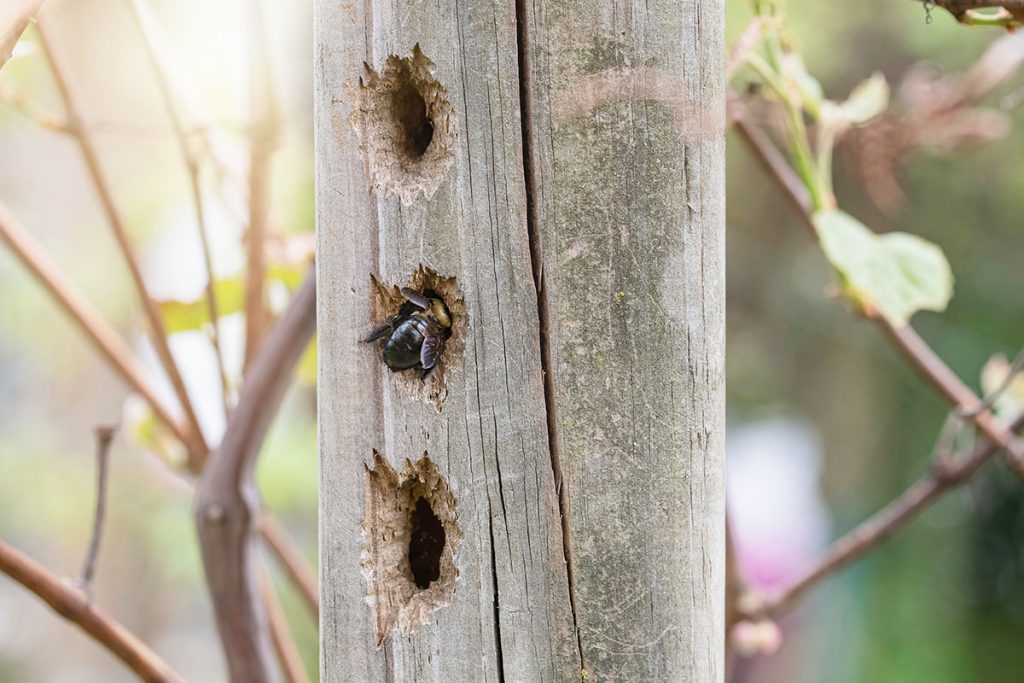Carpenter bees are beneficial to the environment as pollinators, however they can be a nuisance to homeowners if they don’t take the proper measures to prevent intrusion. They are a bit larger than your average bumblebee, not likely to sting unless provoked, and love to burrow into wood (ideally, soft or untreated wood).
Once inside the wood beams/boards, they build galleries to lay eggs in the spring and take shelter in the winter. They prefer to return to already constructed tunnels and enlarge them as needed, which further increases the damage to your wood. Look for signs of activity via:
- holes in wood (these are either round holes the size of a nickel, or elongated)
- sawdust or wood shavings
- yellow substance inside the hole
The problem, if left untreated from carpenter bee damage, is the wood can become destabilized in areas they have colonized.
Tips to help prevent infestation include:
THE RIGHT WOOD
Choose pressure-treated hardwoods. Soft or untreated wood makes it easier to make themselves at home.
Hardwoods: Oak, Teak, Mahogany, Walnut, Hickory
PROTECTANTS
If the wood constructs are exposed to the outdoor elements, they must be painted or coated with a proper sealant. Using paint is great because the bees hate the taste therefore adding multiple coats will be an adequate barrier. If you are using a stain for your wood, make sure you also use a sealant atop; carpenter bees have been known to chew through stained wood that is raw and soft.
When applying the sealant or paint ensure that you touch all the surfaces including under railings, sills, joints, and edges.
KEEP COVER
In lieu of or in addition to coating the wood with paint or sealant, you can add an extra barrier of vinyl, aluminum, or other appropriate tactile. If this cover is the only deterrent you have, make sure that the full area is completely sealed, with little to no gaps.
CONSIDER PESTICIDE TREATMENT FROM A PRO
Keeping these pests at bay is one thing, but if you already have an intrusion on your hands then pesticides may be your best bet. Reach out to a trusted pest business for an evaluation vs. using over-the-counter products.


